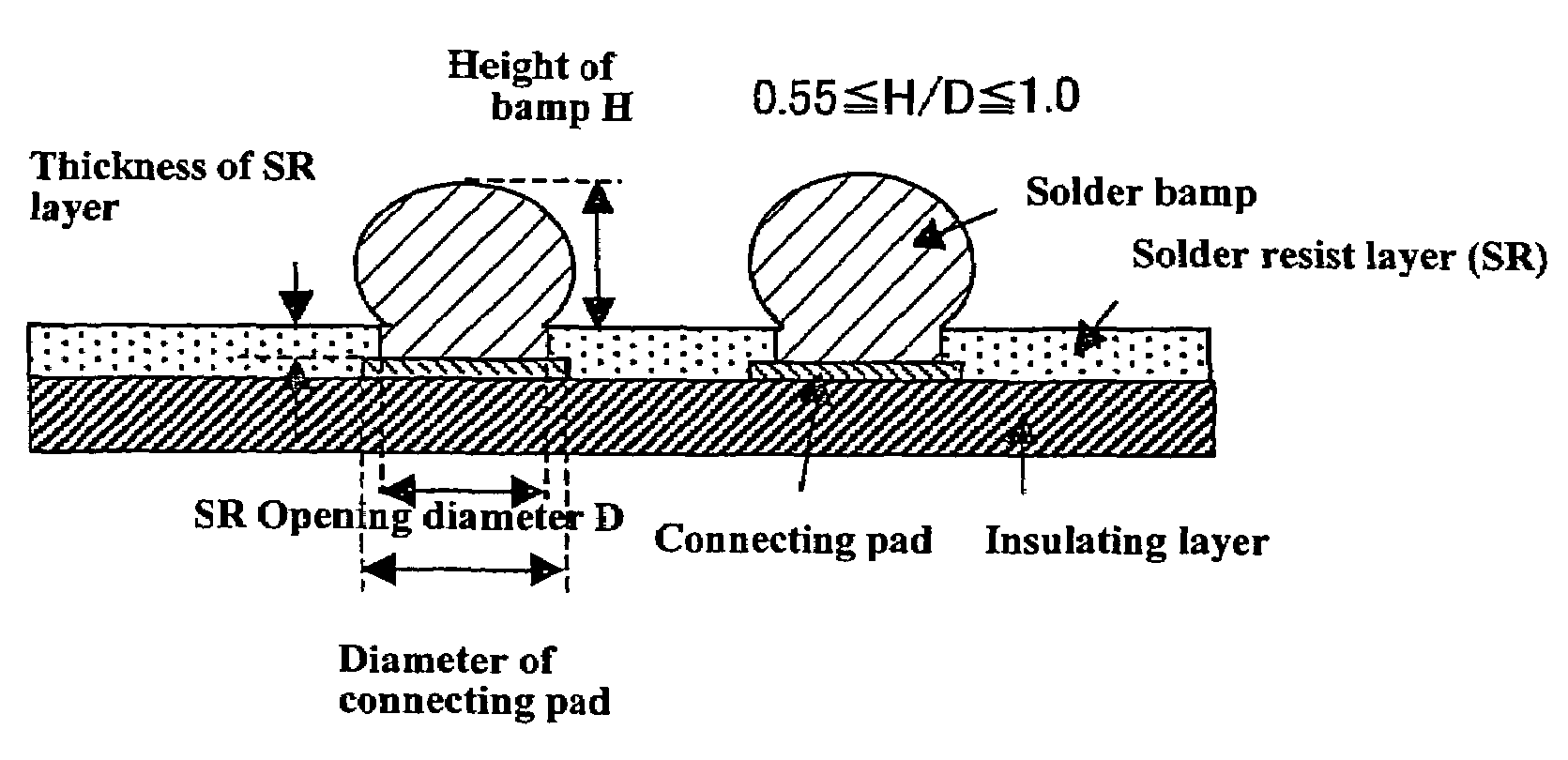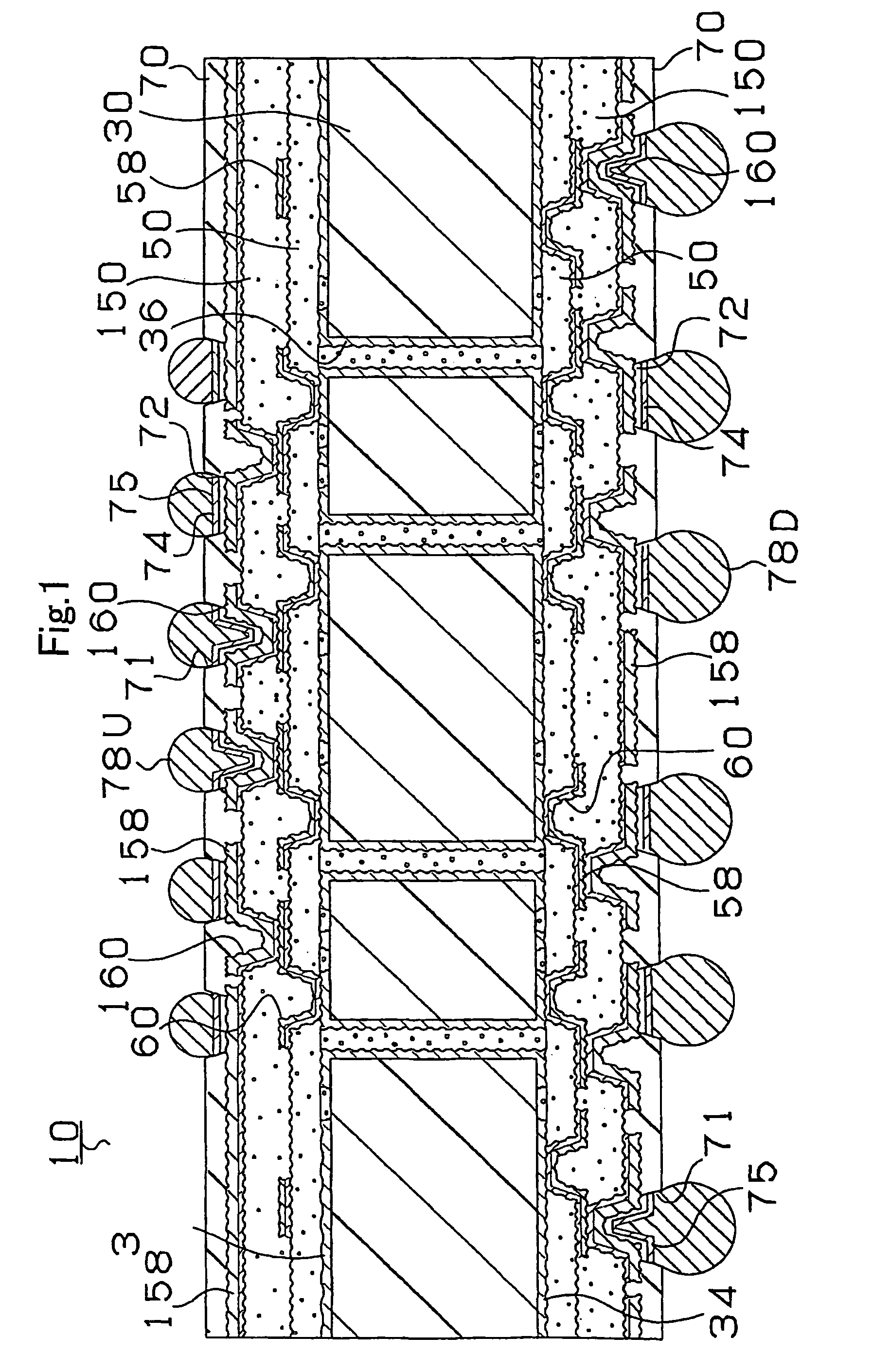Printed wiring board
a technology of printed wiring and wires, applied in the direction of lithographic masks, non-printed masks, non-metallic protective coating applications, etc., can solve the problem of destroying the solder bump
- Summary
- Abstract
- Description
- Claims
- Application Information
AI Technical Summary
Benefits of technology
Problems solved by technology
Method used
Image
Examples
example 1
(1) Manufacture of Printed Wiring Board
[0075]As starting material, a double sided copper-clad laminate (e.g. “MCL-E-67” made by Hitachi Chemical) is used, and on this substrate are formed a through-hole conductor and a conductor circuit by a known method. Thereafter, insulating layers and conductor circuit layers are alternately laminated by a known method (e.g. described in a book entitled “Build-up multilayer printed wiring board” (Kiyoshi Takagi) published by Nikkan Kogyo Shinbunsha on Jun. 20, 2000, and the content of this book is incorporated herein by reference in its entirety), and in the outermost conductor circuit layer, a group of connecting pads for mounting IC chips consisting a grid-like arrangement having thickness: 20 μm, diameter (conductor pad diameter): 150 μm, pitch: 200 μm, number: 50×40 (pieces) is formed within a connecting pad region of 150 mm2.
[0076]A dimension of the region for forming these connecting pads was 150 mm2. Such connecting pad are formed by a me...
example 2
[0095]Except that the printing condition (mesh of the screen and printing speed) of the solder resist is regulated, film thickness of the solder resist is made 15 μm and the solder ball having a diameter of 140 μm is mounted with the use of the ball aligning mask having an opening diameter of 160 μm, a printed wiring boards is manufactured in the same manner as in Example 1. As a result, the minimum value of the solder bump height becomes 63 μm and the maximum value thereof becomes 68 μm.
example 3
[0096]Except that the printing condition (mesh of screen and printing speed) of the solder resist is regulated, film thickness of the solder resist is made 15 μm and the solder ball having a diameter of 135 μm is mounted with the use of the ball aligning mask having an opening diameter of 155 μm, a printed wiring board is manufactured in the same manner as in Example 1. As a result, the minimum value of the solder bump height becomes 65 μm and the maximum value thereof becomes 70 μm.
PUM
| Property | Measurement | Unit |
|---|---|---|
| height | aaaaa | aaaaa |
| height | aaaaa | aaaaa |
| height | aaaaa | aaaaa |
Abstract
Description
Claims
Application Information
 Login to View More
Login to View More - R&D
- Intellectual Property
- Life Sciences
- Materials
- Tech Scout
- Unparalleled Data Quality
- Higher Quality Content
- 60% Fewer Hallucinations
Browse by: Latest US Patents, China's latest patents, Technical Efficacy Thesaurus, Application Domain, Technology Topic, Popular Technical Reports.
© 2025 PatSnap. All rights reserved.Legal|Privacy policy|Modern Slavery Act Transparency Statement|Sitemap|About US| Contact US: help@patsnap.com



